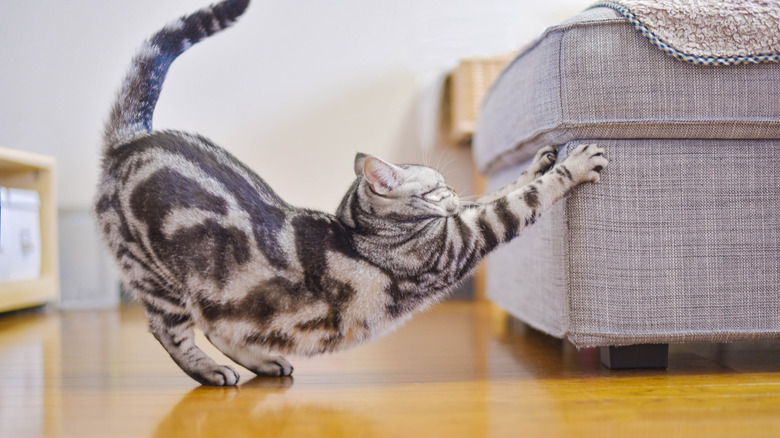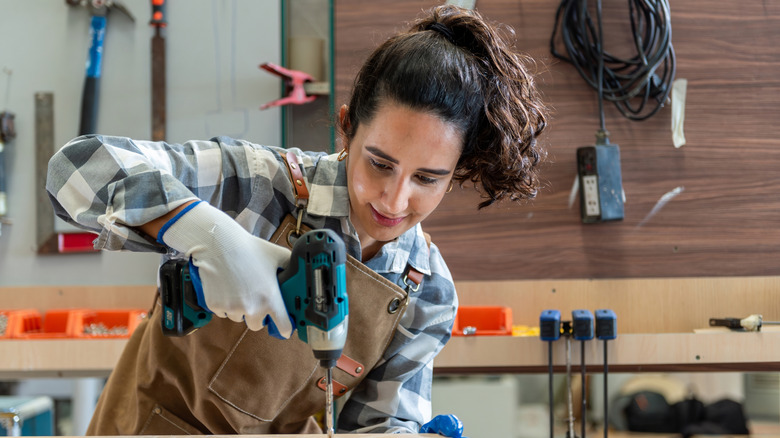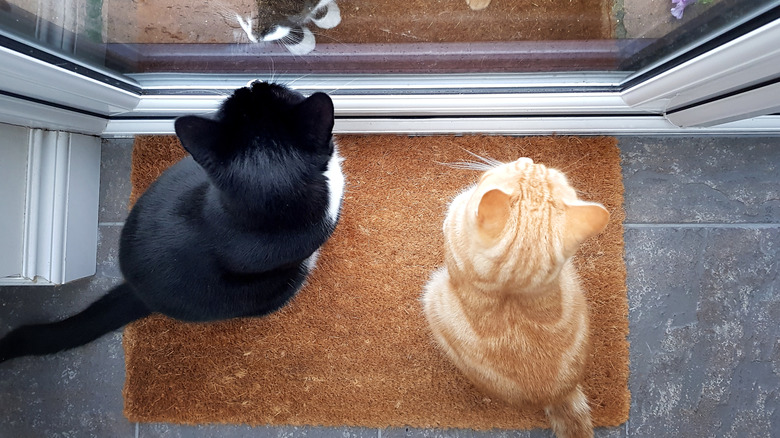DIY The Coolest Kitty Scratch Board With An Item You Already Own
We may receive a commission on purchases made from links.
Cats, with their instinct to scratch, often target furniture, leaving unsightly marks. However, as beneficial as a cat scratching post can be, they aren't exactly cheap. Some cost as much as $100. Plus, they take up quite a bit of space, which isn't ideal if you're living in a cramped apartment.
The good news is you can protect your home while giving your feline friend a place to let loose with a DIY scratch board that blends function and style. Best of all, you don't need to spend a lot of money on materials to make one. By repurposing an old doormat and framing it, you can get your creative juices flowing and make a space-saving board that looks great and satisfies your feline's scratching needs.
With this simple and fully customizable project, you can protect your furniture and enhance your home's aesthetic. The fact that you're using a familiar item means there's no worry about whether your kitty will take to that new expensive scratch tower, either. The old doormat is likely already cat-scent approved. Thus, your feline friend gets a dedicated, made-with-love scratching surface, and you get a functional décor piece. Between you, your fur baby, and sofa, it's a clear win-win-win!
How to make your own cat scratch board
Building a scratch board for your cat is a straightforward, eco-conscious process that requires minimal materials. If you want to be extra cost-effective, consider recycling a doormat you already own or picking one up from a thrift shop. Alternatively, you can head to a hardware or home goods store and select a durable doormat that's scratch-friendly, such as this SAFAVEIH accent rug. Once you've chosen the mat, find a deep-set picture frame that is slightly larger than the mat's dimensions. A deeper frame will ensure the mat fits securely and add a stylish touch to the final product.
Be sure to measure the inside dimensions and trim the doormat with a utility knife to fit it snugly within the frame. Be precise to avoid gaps or overhangs, as a tight fit will keep the mat secure.To further enhance your post, you can give the frame a fresh coat of paint for a custom look. Keep in mind that certain chemicals in paint can be toxic to cats, so opt for one that is considered low in volatile organic compounds, like pet-friendly Rust-Oleum Milk Paint.
Once you're ready to attach the mat to the frame, use heavy-duty tape, wood glue (like Gorilla Wood Glue), or a staple gun. As you would with a work of art, be sure the mat is stretched evenly across the frame before applying any adhesive or staples. This prevents sagging or bunching, which can occur during regular use. Once the mat is securely fastened to the frame, use hooks or Heavyweight Command Strips to mount it onto a lower portion of your wall where your cat can easily access it.
What materials work best for a scratch post?
When creating a scratch board for your cat, picking the right components is key. You want to use a material with a texture your kitty will love getting their claws into and will hold up against repeat use. One of your best options is coco coir, which is made from coconut husks. It's a durable and natural option with a rough texture that cats enjoy. Sisal fabric is another strong and long-lasting choice, perfect for heavy use. Derived from the agave plant, sisal and its composites are eco-friendly fibers with a wide range of uses, from the construction and automotive industries to the cat furniture world.
For a softer touch, carpet remnants provide a plush surface, although they may wear out faster. Cardboard is another popular option, offering a shreddable texture that cats adore. Finally, jute, another widely used fabric of ancient origin — being first produced during the Indus River Valley civilization — provides a good balance between durability and comfort with its natural, yet gentle texture. Each of these materials has its own benefits, so consider your cat's scratching habits and your home décor when choosing one for your DIY scratch board.


